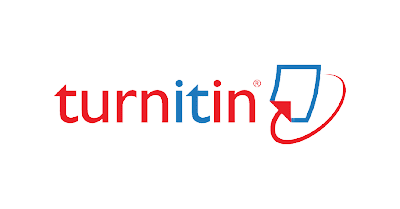EVALUASI WAKTU TEMPUH PENGUNJUNG ELEVATOR PADA AREA WEST MALL DI GRAND INDONESIA
Abstract
Elevators is used as vertical transportation devices in multi-story buildings. The Grand Indonesia Mall in the West Mall area provides two areas for its elevators, one of which is the Arjuna Elevator in the foodprint area. According to the Indonesian National Standard (SNI) 03-6573-2001, in a standard building, visitors typically wait for elevators for about 40-60 seconds. However, at the Arjuna Elevator, the waiting time exceeds 60 seconds, leading to queues. The reference used in this study is SNI 03-6573-2001, and the research method involves direct survey implementation conducted over 14 days. The calculation results based on direct surveys show that the travel time of the Arjuna Elevator is 80 seconds. It is noted that only 2 out of 3 units are currently operational, with 1 unit undergoing repairs. Consequently, the average waiting time for each unit is 120.997 seconds. The capacity within 5 minutes reaches 100 people, and the circulation demand is 9.17%, while the minimum circulation demand according to SNI 03-6573-2001 is 10%. Based on these calculations, It is concluded that the optimal number of elevator units is 3, resulting in a circulation demand of 10.09% for the Arjuna Elevator in the West Mall area of Grand Indonesia.
Downloads
References
Adiyatama, I. (2019). Pengaruh Kepemimpinan, Motivasi, Dan Kompensasi Terhadap Disiplin Kerja Karyawan Pada Pt. Perkebunan Nusantara Iv Medan. Skripsi Universitas Muhammadiyah Sumatra Utara, 1–122.
Afifah, A. F., Herlintang, T., Ratna, D., & Hartono, N. (2017). Analisa Kebutuhan Dan Manajemen Pemeliharaan Elevator Pada Gedung Perum Perhutani Unit I Jawa Tengah. Wahana Teknik Sipil: Jurnal Pengembangan Teknik Sipil, 22(1), 17–28.
Al-Kodmany, K. (2023). Smart Elevator Systems. Journal of Mechanical Materials and Mechanics Research, 6(1). https://doi.org/10.30564/jmmmr.v6i1.5503
Amin, J., & Bararah, K. (2021). Penerapan Sistem Manajemen Keselamatan dan Kesehatan Kerja. Tameh: Journal of Civil Engineering, 10(1). https://doi.org/10.37598/tameh.v10i1.127
Chu, T. H., Chao, C. M., Liu, H. H., & Chen, D. F. (2022). Developing an Extended Theory of UTAUT 2 Model to Explore Factors Influencing Taiwanese Consumer Adoption of Intelligent Elevators. SAGE Open, 12(4). https://doi.org/10.1177/21582440221142209
Darmalaksana, W. (2020). Metode Penelitian Kualitatif Studi Pustaka dan Studi Lapangan. Pre-Print Digital Library UIN Sunan Gunung Djati Bandung.
Duan, X., Zhi, P., Zhu, W., & Wei, H. (2023). Fuzzy adaptive PID speed controller design for modern elevator traction machine. Energy Reports, 9. https://doi.org/10.1016/j.egyr.2023.04.262
Fang, H., Qiu, H., Lin, P., Lo, S. M., & Lo, J. T. Y. (2022). Towards a Smart Elevator-Aided Fire Evacuation Scheme in High-Rise Apartment Buildings for Elderly. IEEE Access, 10. https://doi.org/10.1109/ACCESS.2022.3201516
Guo, Z., Xiao, G., Du, J., Cui, W., Li, B., & Xiao, D. (2023). A dynamic model for elevator operation-induced spread of a respiratory infectious disease in an apartment building. Heliyon, 9(3). https://doi.org/10.1016/j.heliyon.2023.e13612
Laakkonen, M. P., & Kivivirta, V. (2024). Elevators as media objects manipulating information in time. New Media and Society, 26(2). https://doi.org/10.1177/14614448211067460
Mossberg, A., Nilsson, D., & Frantzich, H. (2022). Evaluating new evacuation systems related to human behaviour using a situational awareness approach – A study of the implementation of evacuation elevators in an underground facility. Fire Safety Journal, 134. https://doi.org/10.1016/j.firesaf.2022.103693
Palacín, J., Bitriá, R., Rubies, E., & Clotet, E. (2023). A Procedure for Taking a Remotely Controlled Elevator with an Autonomous Mobile Robot Based on 2D LIDAR. Sensors, 23(13). https://doi.org/10.3390/s23136089
Rijal, Mu. (2021). Memahami desain metode penelitian kualitatif. Humanika, 21(1), 33–54.
Robal, T., Reinsalu, U., & Leier, M. (2021). Towards personalized elevator travel with smart elevator system. Baltic Journal of Modern Computing, 8(4). https://doi.org/10.22364/BJMC.2020.8.4.12
Sebayang, E. M., Rahardjo, H. A., & Dinariana, D. (2018). Pengelolaan Risiko Proyek Gedung Bertingkat Pada PT. XYZ Di Jakarta terhadap Kinerja Waktu. Jurnal Teknik Sipil, 25(3). https://doi.org/10.5614/jts.2018.25.3.8
SNI-03-6573-2001. (2003). Tata Cara Perancangan Sistem Transportasi Vertikal. International Journal of Physiology, 6, 140–141.
Sugiyono, P. D. (2019). Metode Penlitian Kuantitatif, Kualitatif, dan R&D. 334.
Sutarti. (2016). Deteksi Lokasi Objek Dalam Gedung Berbasis IEEE 802.11 Menggunakan Metode K-Nn. Jurnal PROSISKO, 3(2).
Tangoro, D. (2016). Utilitas Bangunan. In Paper Knowledge . Toward a Media History of Documents.
Copyright (c) 2024 Michel Kasaf, Rahayu Pradita, Hillary Widiyanti Sukma Anandita, Dora Melati Nuritasandi

This work is licensed under a Creative Commons Attribution-ShareAlike 4.0 International License.
Jurnal allows anyone to compose, correct, and do derivative works, even for commercial purposes, as long as they credit for the original work. This license is the freest. It is recommended for maximum distribution and use of licensed material.
The submitted paper is assumed not to contain any proprietary materials that are not protected by patent rights or patent applications; The responsibility for technical content and protection of proprietary materials rests with the authors and their organizations and not the responsibility of journal or its editorial staff. The primary (first/appropriate) author is responsible for ensuring that the article has been viewed and approved by all other authors. The author's responsibility is to obtain all necessary copyright waivers to use any copyrighted material in the manuscript before submission.
Jurnal Pendidikan, Sains dan Teknologi allows the author(s) to hold the copyright without restrictions and allow the author(s) to retain publishing rights without restrictions. Jurnal Pendidikan, Sains dan Teknologi CC-BY-SA or an equivalent license as the optimal license for the publication, distribution, use, and reuse of scholarly work. Jurnal Pendidikan, Sains dan Teknologi allows the author(s) to hold the copyright without restrictions and allow the author(s) to retain publishing rights without restrictions. Jurnal Pendidikan, Sains dan Teknologi CC-BY-SA or an equivalent license as the optimal license for the publication, distribution, use, and reuse of scholarly work.
In developing strategy and setting priorities Jurnal Pendidikan, Sains dan Teknologi recognize that free access is better than priced access, libre access is better than free access, and libre under CC-BY-SA or the equivalent is better than libre under more restrictive open licenses. We should achieve what we can when we can. We should not delay achieving free in order to achieve libre, and we should not stop with free when we can achieve libre.
Jurnal Pendidikan, Sains dan Teknologi is licensed under a Creative Commons Attribution-ShareAlike 4.0 International License.
You are free to:
- Share a copy and redistribute the material in any medium or format
- Adapt a remix, transform, and build upon the material for any purpose, even commercially.
- The licensor cannot revoke these freedoms as long as you follow the license terms.






